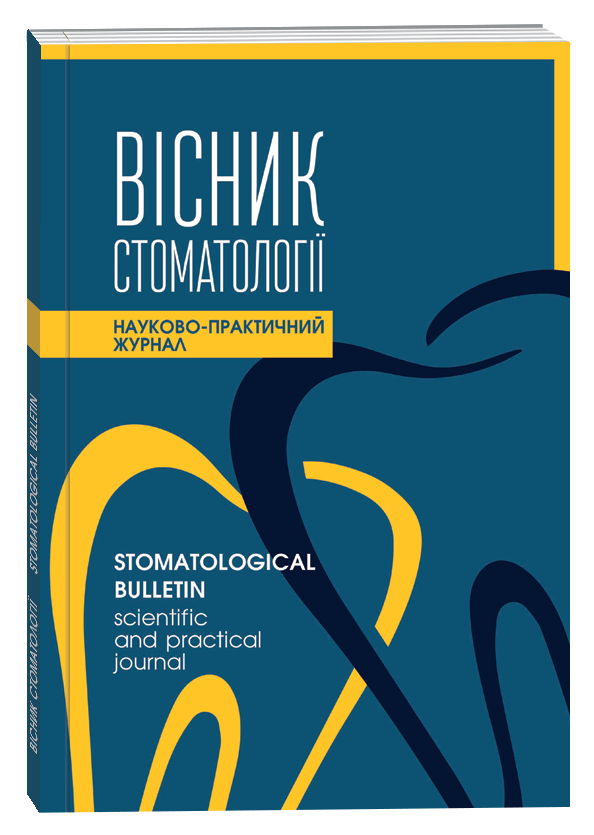MORPHOMETRIC ASSESSMENT OF THE VELOPHARYNGEAL COMPLEX IN CHILDREN IS NORMAL
DOI:
https://doi.org/10.35220/2078-8916-2022-43-1.10Keywords:
congenital non-fusion of the palate, soft palate muscles, childrenAbstract
Relevance. The velopharyngeal complex (VPC), due to its deep location, restriction of the airways, muscles and bones, is a rather difficult object to study. The main research methods are: anthropometric, endoscopic, speech therapy. None of them visualizes the main muscles of the soft palate, does not give a complete description of all the structures of VPC and its anatomical and topographical relationship with the surrounding tissues. In recent years, magnetic resonance imaging, which is a non-invasive method, has become quite common, scans are performed quickly, allows you to assess the soft palate and posterior pharyngeal muscles, identify the cause of velopharyngeal insufficiency and plan surgery. Materials and methods. 115 MRI of children without pathology of the velopharyngeal complex aged from 3 months to 18 years was studied. Results. Levator muscle has 2 peaks of growth: up to 1 year increase 2 times compared to 4 months, and in 6 years – 1.2 times compared to 5 years. By the year LM grows due to both the intravelar and extravelar part of it. After 1 year to 6 years, the extravelar part increases 2 times, and the intravelar part after 12 months has no significant growth. The distance between the places of attachment of the LM increases 2.5 times to 6 years, and the distance between the places of weaving into the soft palate increases 1.4 times to 12 months, and 1.3 times up to 18 years compared to 12 months. Tensor muscle increases to 6 years in 1.4 times, after which further changes are not statistically significant. Extravelar and intravelar parts of it also increase 1.4 times. The length of the soft palate shows a gradual increase throughout the age period of the study – 1.5 times to 18 years, and the thickness of the soft palate increases to 1 year by 2 times and does not show changes up to 18 years. The distance to the posterior wall of the pharynx increases to 1 year in 3–4 times. The size of the mesopharynx shows an increase in their performance up to 18 years from 2.2 to 3.5 times. However, there are significant age variations. Conclusions. The growth of the soft palate predominates due to the levator muscle in the period up to 2 years due to both extra- and intravelar part of it, from the age of 3 elongation occurs due to the tensor muscle. The width, depth, and height of the mesopharynx increase with the age of the child and indicate a greater dependence on the extraveral part of the muscles of the LM and TM, and that on the volume of lymphoid tissue of the nasopharynx. The distance to the posterior wall of the pharynx depends on the length of the soft palate and the expression of adenoid growths. For the soft palate effective grow, it is necessary to lengthen the soft palate and reduce the width and depth of the mesopharynx. This requires myoplasty to the level of muscle entanglement in the soft palate and move to the correct position. And at the expressed underdevelopment of not fused fragments – to carry out reduction of depth of a mesopharynx by retrotraposition.
References
Bhuskute A., Skirko J.R., Roth C., Bayoumi A., Durbin-Johnson B., Tollefson T.T. Association of velopharyngeal insufficiency with quality of life and patient-reported outcomes after speech surgery. JAMA Facial Plast Surg. 2017. No. 19(5), p. 406–412.
Sweeney W.M., Lanier S.T., Purnell C.A., Gosain A.K. Genetics of Cleft Palate and Velopharyngeal Insufficiency. J Pediatr Genet. 2015. No. 4(1), p. 9–16. DOI: 10.1055/s-0035-1554978.
Gart M.S., Gosain A.K. Surgical management of velopharyngeal insufficiency. Clin Plast Surg, 2014. No. 41(2), p. 253–270.
Jamie L. Perry, Katelyn J. Kotlarek, Bradley P. Sutton, David P. Kuehn, et al. Variations in Velopharyngeal Structure in Adults With Repaired Cleft Palate. Cleft Palate Craniofac J. 2018. 1:1055665617752803. DOI: 10.1177/1055665617752803.
Jamie L. Perry, David P. Kuehn, Bradley P. Sutton, Jinadasa K. Gamage, Xiangming Fang. Anthropometric Analysis of the Velopharynx and Related Craniometric Dimensions in Three Adult Populations Using MRI. The Cleft Palate–Craniofacial Journal. 2016. No. 53(1), pp. e1–e13.









